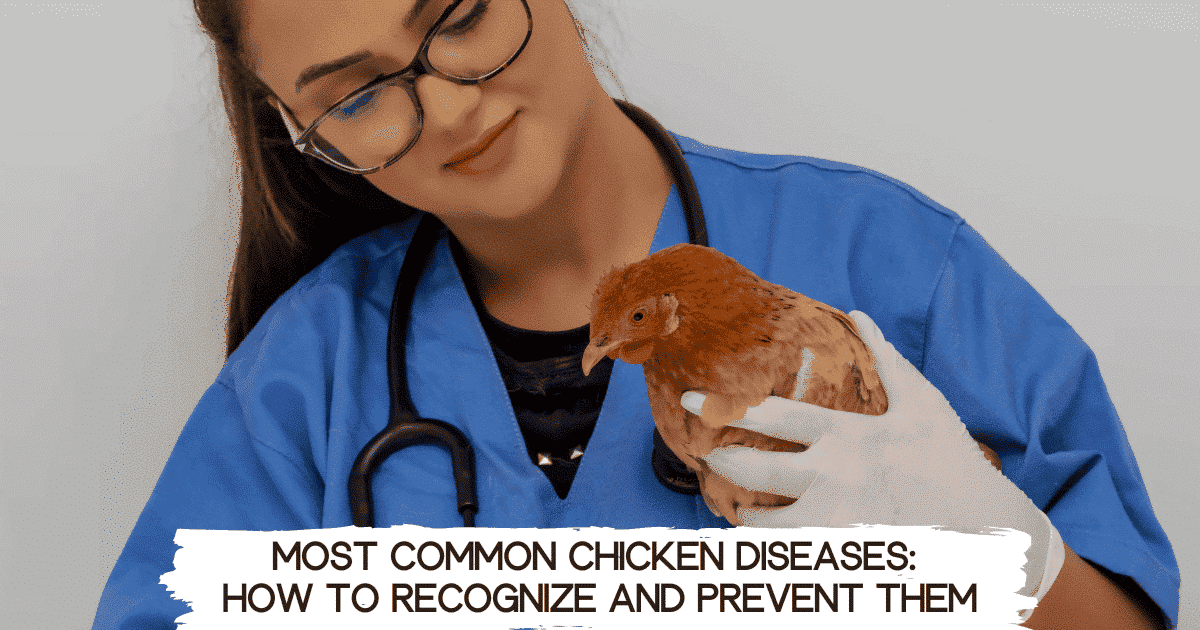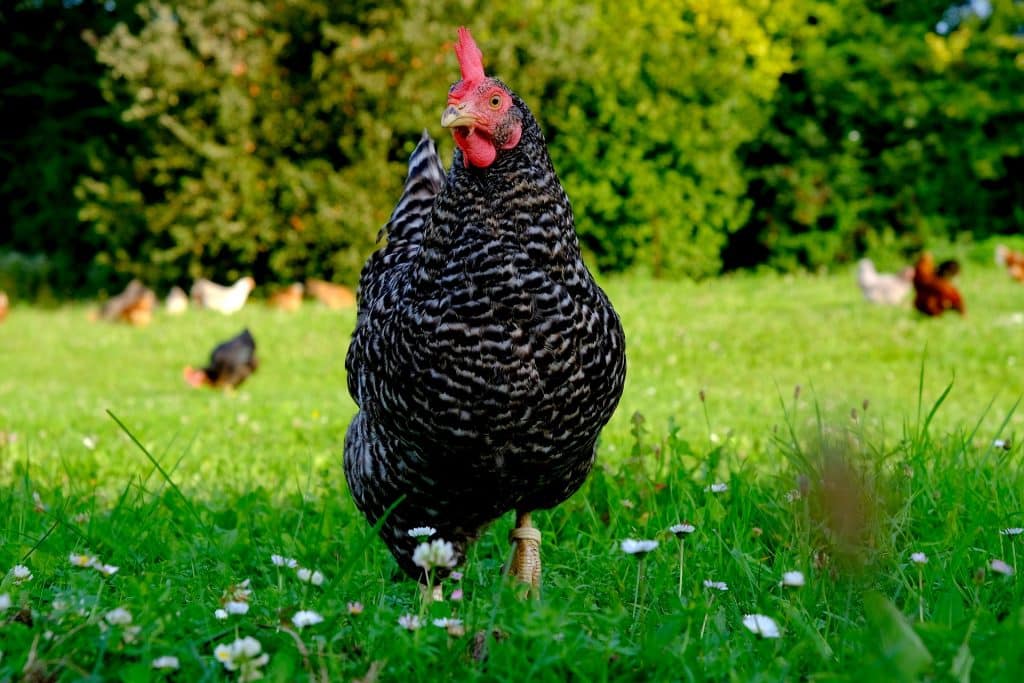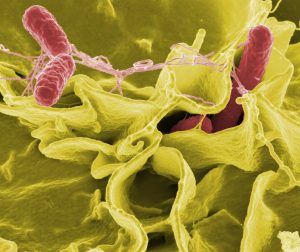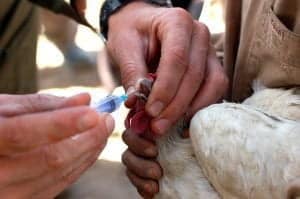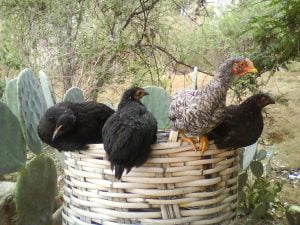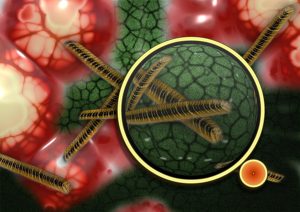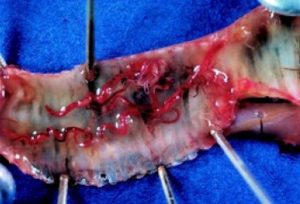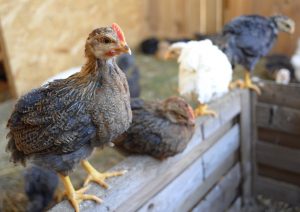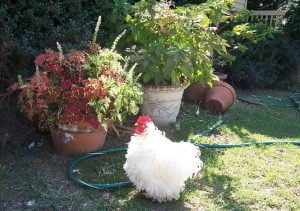Chicken diseases are a concern for anyone who raises chickens. Many chicken diseases can affect the health of your chickens. Some of these diseases are caused by viruses, bacteria, and parasites. Others are caused by poor nutrition and environmental conditions. The best way to prevent diseases is to keep the birds healthy and to provide them with proper care. They need quality and nutritious food, freshwater, enough daylight or supplemental light, enough space to move around, and a coop or a stable that offers them shelter.
To help you understand better what’s happening with your flock we listed the most common chicken diseases you may run into. Here are each disease’s symptoms and how to prevent them.
Chicken diseases caused by viruses
Viruses can cause particularly serious diseases. These include bird flu and Newcastle disease. Both chicken diseases can quickly affect entire flocks and lead to many deaths. As with bacteria, some viral diseases can be vaccinated against. Viruses also multiply, especially in poor housing conditions, and infect chickens with weakened immune systems.
Bronchitis
The viruses responsible for Bronchitis are spread through the feces and nasal discharge of infected chickens. The disease is harmless in pullets and adult chickens. Chicks are more affected. There it comes to wheezing, shortness of breath, sneezing, nasal discharge, emaciation, and shaggy plumage. Treatment is not possible, vitamin supplements can alleviate the course. A good stable climate, sufficient hygiene, and vaccination help preventively.
Fowlpox
This Fowlpox disease occurs mainly in damp weather, caused by the fowlpox virus. Infection occurs through mouth and nose secretions or feces. The virus can also spread via blood-sucking parasites. There are two forms of smallpox. The main form stands out due to the eponymous knots on the comb, wattles, or in the nose area. Earpads can also be affected. Smallpox is the size of a pea to a cherry, dark brown, and fall off on their own after a while.
Yellow coatings in the throat and beak testify to the shape of the mucous membrane. There is a risk of suffocation if the course is very severe. The veterinarian can vaccinate the stock as a preventive measure.
Bird flu/Poultry influenza
Unlike Newcastle disease, bird flu is not transmitted by plague viruses but by influenza viruses. This disease is also notifiable, must not be treated, and leads to the killing of the entire stock. Bies flu can be transmitted to other bird species or is transmitted to chickens through them.
Vaccination against H5N1 bird flu is nowadays possible. Protection can be provided also by good stable hygiene and minimizing contact with wild birds.
Symptoms can be apathy, reluctance to eat, fever, difficulty breathing, reduced laying performance, poor egg quality, dull, shaggy plumage, edema, blue discoloration of the skin and mucous membranes, and sudden death.
Leukosis
Leukosis is a widespread viral disease. Infection can already occur in the hatching egg or through chicken contact. Older young chickens between 6 and 10 months are susceptible. Chickens with Leukosis lose weight, comb and wattles become yellowish or fade. A cure is not possible.
Newcastle disease/Atypical poultry Influenza
Newcastle disease has to be reported to government authorities. Unfortunately, sick chickens cannot be treated and the stock has to be euthanized. The disease is highly contagious and can spread to other bird species. A plague virus is responsible, which is mainly transmitted through feces and mucus secretions.
Symptoms can be a reluctance to eat, high fever, green and thin diarrhea, excessive drinking, the flow of eggs, neurological deficits, walking backward, head twisting.
Marek’s disease/Fowl paralysis
Marek’s disease is a very common disease of chickens caused by a herpes virus. This viral disease affects the brain and nerves, causes changes in many of the nerves, and may cause tumors in major internal organs. Chickens with Marek’s disease let their wings hang, show an unsteady gait and limp. The leg limbs are unnaturally buckled. The eyes turn gray-green and have jagged pupil edges. The risk of infection is manifold.
Marek’s disease is highly contagious being spread by infected feather-follicle dander, fomites, etc. Infected chickens remain viraemic for life.
Symptoms are paralysis of legs, wings, and neck, loss of weight, grey iris or irregular pupil, vision impairment, and skin around feather follicles being raised and roughened.
Vaccination is the only known method to prevent the development of tumors when chickens are infected with the virus. Treatment for this viral disease is not possible. If young chickens are infected, high losses must be expected.
Chicken diseases caused by bacteria
Bacteria are found everywhere in the environment, including the chicken coop. They can cause many illnesses, from a simple cold to severe tuberculosis. Chickens that are poorly kept or are given contaminated feed and water are particularly susceptible. Bacteria can therefore best be kept in check by good husbandry conditions. Some diseases can be prevented with vaccination.
Chicken cholera
Chicken cholera can affect all types of birds and can therefore also be transmitted from wild birds to chickens.
Symptoms are weakness, loss of appetite, watery, sometimes bloody diarrhea, shortness of breath and joint swelling in severe cases and death occur within a few hours or days.
Treatment is not possible. Poultry cholera is no longer so common today because the general housing conditions have improved. The best prevention is therefore to keep them as hygienically as possible and to feed them vitamins and minerals as needed.
Fallopian tube inflammation
This inflammation mainly affects egg-laying chickens. In addition to bacteria, viruses are also the cause. They occur through the smallest of injuries, which can result from mutual pecking, houndstooth kicking, or improper handling of the chickens.
Symptoms are emaciation, apathy, reluctance to exercise, and yellow-smeared glued plumage around the cloaca.
Fallopian tube inflammation can only be treated in the early stages. Keeping chickens as clean and low in germs as possible and proper handling of the chickens serve as a preventive measure.
Tuberculosis
Tuberculosis bacteria occur in very poor, unhygienic husbandry conditions and overaged herds. Depending on the strain of the pathogen, they can be contagious to humans. The disease can drag on for a long time. The chickens lose weight, comb and wattles lose their typical color. However, the disease can only be definitively proven through an autopsy.
A veterinarian should be consulted if tuberculosis is suspected. The bacteria are very resistant. Curing is not possible, it may even be necessary to kill the entire stock.
White chick dysentery
This disease is caused by salmonella. Chicks that grow up under poor husbandry conditions are particularly affected. The causative agents of the disease are found in contaminated feed and the feces of diseased chickens. In addition, white chick dysentery is one of the chicken diseases that can be transmitted via the hatching egg.
Symptoms are hanging wings, general weakness, refusal to feed, increased need for warmth, and feathers stuck around the anus.
Treatment does not make sense, even if the chickens should recover, they are then permanent shedders of salmonella. The most important prevention is good barn hygiene and the right warmth when raising the chicks.
Sniffles
While a cold is almost always caused by a virus, a cold in chickens is caused by bacteria. However, the cause of the outbreak of the disease can be a previous cold. Chickens get a cold when the climate in the barn is unfavorable. Especially when it is damp and cold or warm.
Chicken sniffles can be recognized by purulent nasal discharge, head shake, sneeze, difficulty breathing, rattling or wheezing breath sounds, and swollen nose and eye area.
Home remedies are the first step. If the cold persists, a veterinarian should be consulted, who will prescribe antibiotics if necessary. To avoid the disease, a dry barn without drafts is important.
Chicken diseases caused by parasites
Parasites in chicken stocks not only endanger chickens through the diseases they transmit but also through the general immune deficiency caused. Mites, feather lice, fleas, and lice suck blood and can cause anemia. In addition, blood-sucking parasites cause severe itching, which can lead to behavioral problems such as feather pecking or cannibalism. Parasites should be combated through regular cleaning, disinfection, and a provided dust bath. There are also special remedies against parasites at the vet.
Coccidiosis or red chick dysentery
It mainly affects little chicks, but also weakened adult chickens. The cause is a unicellular parasite, which leads to severe intestinal inflammation. The permanent forms (oocysts) can also survive in the barn for a long time. They survive cold and heat and like moist bedding. Transmission occurs through feces, contaminated feed, or drinking water.
Symptoms are that sick chickens take care of themselves, they do not eat and let their wings hang. Bloody diarrhea follows and if the disease progresses quickly, the chickens die within 4 to 5 days. There are effective remedies available from the veterinarian to combat the disease.
Calcified legs
This disease is caused by mange mites. These burrow into the skin on the legs and can be recognized by the formation of a thick bark, which makes it difficult for the chickens to walk. The mites are highly contagious. Softening and washing off the bark with a soft soap solution and the administration of an anti-mite agent are helpful.
Worms
Depending on the type of worm, symptoms become noticeable in different ways:
- Tracheal worm leads to loss of appetite and shortness of breath
- Ascarids and hairworms affect young chickens and lead to emaciation, diarrhea, and shaggy plumage
- Intestinal worms can cause inflammation and diarrhea
Worms are mainly ingested through the feces of diseased chickens (including wild chickens), especially in the run. Regular deworming can help as a preventive measure.
Chicken diseases caused by fungi
Mold isn’t just dangerous for humans. Fungal spores from moldy feed or litter pose a particular threat to the chickens, which disperse them in the air and breathe them in when they scratch. Other fungi can also be transmitted through physical contact. Only good quality feed and clean bedding should be used.
Comb grind
Combs, wattles, and earlobes are affected by this disease. The chickens can become infected by touching sick chickens. Affected areas can be recognized by light spots that spread and take on a bark-like structure. Removing the bark with a soft soap solution and brushing the affected areas with an iodine tincture is helpful.
Aspergillosis
The mold spores enter the chickens’ airways and cause severe inflammation there. Externally, the disease can be recognized by a whitish pale complexion and a watery environment around the eyeball. In addition, fatigue, loss of appetite, diarrhea, and wheezing can occur. Young chickens are particularly vulnerable, and deaths can occur in them. Otherwise, the illness lasts between 4 to 6 weeks. Treatment is difficult and expensive.
Injuries
Chickens can get injured for a variety of reasons. These include unsuitable perches, which can lead to bunions, sharp and pointed objects in the stable, or behavioral disorders such as feather pecking and cannibalism.
Laying difficulties, in which an egg gets stuck in the oviduct of the hen, are particularly dangerous. The hen needs immediate help, otherwise complications may arise. When your hen is egg bound, your hen may appear weak, show no interest in moving or eating, have a “panting” respiratory rate and may have some abdominal straining. If you do not trust yourself to help the hen, the vet should be called immediately.
The vet should also examine bunion ulcers. They form when injuries to the feet become infected and fester. Chickens can also be harmed by predator attacks that can even kill them. For their safety, install a sturdy automatic chicken coop door, that will close automatically every night and prevent predators from entering the coop. Run-Chicken coop doors are made of aluminum, and there is no chance of breaking inside.
Poor husbandry and chicken diseases
Incorrect or contaminated feed can lead to serious illnesses. These include, for example, intestinal inflammation and goiter constipation. Missing or incorrectly composed vitamins and minerals also cause diseases. These include gout due to vitamin A deficiency and excess protein and rickets due to vitamin D deficiency.
Intestinal inflammation heals without consequences if the chickens are fed the right food and given chamomile or peppermint tea to drink for a while. Goiter constipation is shown by a protruding goiter, refusal to feed, and shortness of breath. You can fix goiter constipation by emptying the goiter. To do this, the chicken is held upside down and the crop is gently massaged until the contents drain out through the beak. If that doesn’t help, only the veterinarian can drain the goiter through an operation.
Rickets
This vitamin-deficiency disease manifests itself in chicks and adolescent chickens as weakness in the legs, thickening of the joints or unnatural bends, buckling of the toes, and squatting on the heel joints. An immediate increase in vitamin D intake is helpful. The chickens also need a lot of sunlight.
Gout
This disease occurs mainly in older chickens, which have been suffering from a vitamin deficiency for a long time. A metabolic disorder occurs and uric acid is no longer excreted but stored. Signs include swelling with a yellowish-white mass on the feet or a fine-grained, white coating on the internal organs.
Prevention
The most important measure to avoid chicken diseases and injuries is prevention. These include the following options:
- ensure correct husbandry conditions
- pay attention to the correct coop size, coop climate should be dry and warm, avoid frost, moisture, and summer heat
- design the equipment of the chicken coop in a manner suitable for chickens
- keeping new, injured, or diseased chickens in quarantine
- regularly clean and disinfect coop and equipment
- feed and water as needed
- keep coop inaccessible to wild animals
- multivitamins and minerals via drinking water and feed
- get an Automatic Chicken Coop Door to protect them from predators
If your chickens are healthy, safe, and happy, they will also hatch lots of eggs and have quality meat. Do you want to know more about preventing diseases? Read a blog post on How to keep your chickens healthy and increase egg production.
Share your chicken caretaking experience with other chicken owners in Chicken&Egg lovers Facebook group.

